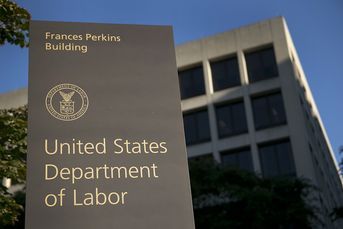M&A in 2019 hits record for RIAs, but many sellers overvalue firms

The number of deals increased by more than 30% last year, and it's a seller's market
Deals among registered investment advisers reached a high in 2019, and observers predict it is only the beginning of a sellers’ market that will likely go on for years.
But the volume of deals is also leading would-be sellers to set their expectations too high, overvaluing their businesses and causing roughly a third of deals to fall apart, according to a report Fidelity published this week.
The number of mergers and acquisitions was at least 30% higher last year than those seen in 2018 – or roughly three times the growth rates seen since 2016, according to a separate report from DeVoe & Co.
There were 127 RIA deals reached in 2019, a 44% increase from the number in 2018, according to Fidelity.
“That’s just the beginning. An industry like this could go through some consolidations,” said Scott Slater, vice president of practice management and consulting at Fidelity Clearing & Custody Solutions. “It will continue and will accelerate.”
Last year’s volume of mergers and acquisitions was a record,
but the number of transactions was nonetheless a blip compared to the estimated
17,000 RIAs in the country, he said, citing data from Cerulli Associates.
DeVoe cites an even higher number of deals: 132 in 2019, up from 101 in 2018. Still, that figure is lower than what the industry might expect.
There are more than 5,000 RIAs with at least $100 million in assets under management, and they “theoretically should have 250 to 300 annual transactions – just for succession planning alone,” DeVoe’s report stated.
[More: TD and Schwab tell advisers it’s business as usual, for now]
Further, about half of the deals that closed last year were mergers that were made in order to boost scale, the company said.
Several factors are feeding that trend, particularly an enormous push by private-equity backed firms to scoop up talented advisers and increase their scale. Among 23 firms with at least $100 million AUM that recently have made multiple acquisitions, 90% said buying talent was their goal, according to a 2019 Fidelity survey that was included in that firm’s M&A report.
And advisers who started building their practices decades ago are starting to consider succession planning, and selling the business can quickly address that issue.
Lofty expectations
For many potential sellers, “this is the first time they are seriously thinking about what they might do and how they might do it,” Slater said. “Any entrepreneur tends to over-value their business – they’re just too close to it.”
Last year, the average purchase price for an RIA was about seven times its earnings before interest, tax, depreciation and amortization (EBITDA), according to Fidelity. That is up from the rate of five times EBITDA seen in deals five years ago.
But RIA owners surveyed by Fidelity said they expect to get nine times EBITDA for their businesses, on average, according to the report.
PE firms usually have a very good idea of what RIAs are worth, and potential sellers should focus on complete aspects of deals, rather than just multiples of their earnings, Slater said.
Or they should wait to sell, taking steps beforehand to increase
their potential value to prospective buyers, such as improving performance,
scale and organic growth, according to Fidelity.
Last year’s biggest RIA deals were massive – they included Charles Schwab’s purchase of USAA Investment Management Co., Goldman Sachs’ acquisition of United Capital Financial Advisors, and Charles Schwab’s agreement to buy TD Ameritrade.
Meanwhile, the firms picking up the most RIAs were Focus Financial Partners (19 acquisitions), Mercer Advisors (9), Captrust (7), Wealth Partners Capital Group (7) and HighTower Advisors (6), according to the DeVoe report.
Despite the record volume of RIA deals, AUM changing hands was lower, at about $347 billion in 2019 versus $494 billion in 2018, according to DeVoe. Much of that difference, however, was due to PE firm Hellman & Friedman’s 2018 purchase of Financial Engines, which at the time represented $170 billion in AUM, DeVoe noted.
Learn more about reprints and licensing for this article.








